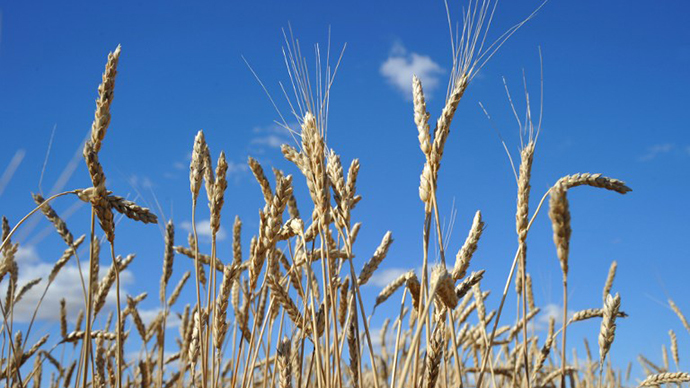Another win for Monsanto: US raises allowable levels of company’s pesticide in crops
Biotech giant Monsanto has been awarded yet another victory by the federal government thanks to a recent Environmental Protection Agency decision to allow larger traces of the herbicide glyphosate in farm-grown foods.
Despite a number of studies linking exposure to the chemical with diseases including types of cancer, the EPA is increasing the amount of glyphosate allowed in oilseed and food crops.
The EPA announced their plans on May 1 and allowed critics two months to weigh in and object to the ruling. Following little opposition, though, the EPA is on path to soon approve of levels of glyphosate being found in crops several times over the current concentration.
Glyphosate, a weed-killing chemical developed by Monsanto in 1970, is the key ingredient in the company’s “Roundup” label of herbicides. In the decades since, Monsanto has created and patented a number of genetically-modified organisms and genetically-engineered crops resisted to glyphosate that are sold worldwide under the company’s “Roundup Ready” brand. Those GMO products are then planted in fields where glyphosate, namely Roundup, is used en masse to eliminate weeds from taking over harvest. With scientists linking that chemical to cancerous diseases, though, critics decry the EPA decision and caution it could do more harm than good.
Through the EPA’s new standards, the amount of allowable glyphosate in oilseed crops such as flax, soybeans and canola will be increased from 20 parts per million (ppm) to 40 ppm, which GM Watch acknowledged is over 100,000 times the amount needed to induce breast cancer cells. Additionally, the EPA is increasing limits on allowable glyphosate in food crops from 200 ppm to 6,000 ppm.
Published on May 13, 2013
http://articles.mercola.com/sites/art... Watch this video and discover the hidden truths about GMO, and its potential harm to the environment and ecosystems.
******************************************************************************
Prevent Disease .com
EPA
Allows Monsanto's Glyphosate Herbicide At Levels 60 Times Higher Above
Toxic Exposure For Canola, Soy, Sunflower, Flax and Peanuts
Are
we starting to come full circle to the reality that we can no longer
trust big agriculture or our food industry for responsible policies and
procurement? Last month the EPA let Monsanto raise the allowable
concentrations of glyphosate on food crops, animal feed, and edible
oils. The new regulation
lets farmers use more of the chemical, which is the active ingredient
in the herbicide Roundup. Oilseed crops such as canola, soy, sunflower,
flax and peanuts can now contain up to 40,000 parts per billion (ppb)
glyphosate which is almost 60 times the minimum containment level for
drinking water which even the EPA admits causes organ damage and
reproductive effects.See EPA Allowable Limit Glyophosate PPB Chart Here
Glyphosate is an herbicide produced and marketed by Monsanto Corporation, the agrochemical and biotechnology giant. Monsanto claims that glyphosate is safe and has successfully lobbied the Environmental Protection Agency to raise the residue limits of this toxic chemical.
But independent scientists disagree with Monsanto: several recently published peer-reviewed studies point to serious health impacts from exposure to this toxic herbicide.
Glyphosate has been shown in several recent studies to be an endocrine disruptor. According to the National Institutes of Health, endocrine disruptors could have long-term effects on public health, especially reproductive health. And the “dose makes the poison” rule does not apply to endocrine disruptors, which wreak havoc on our bodies at low doses.
Even a quick search for scientific publications on glyphosate demonstrates its toxicity and carcinogenicity:
Glyphosate-Induced Carcinogenicity
http://www.ncbi.nlm.nih.gov/pubmed/20045496
Glyphosate’s Suppression of Cytochrome P450 Enzymes
http://www.mdpi.com/1099-4300/15/4/1416
Glyphosate Induces Human Breast Cancer Cell Growth
http://www.ncbi.nlm.nih.gov/pubmed/23756170
Cytotoxicity of the herbicide glyphosate
http://www.ncbi.nlm.nih.gov/pubmed/18320126
Biomonitoring of genotoxic risk in agricultural workers
http://www.ncbi.nlm.nih.gov/pubmed/19672767
Technical Factsheet on: GLYPHOSATE
http://www.epa.gov/safewater/pdfs/factsheets/soc/tech/glyphosa.pdf
Read More Here
*********************************************************************
Related articles













No comments:
Post a Comment
Hello and thank you for visiting my blog. Please share your thoughts and leave a comment :)